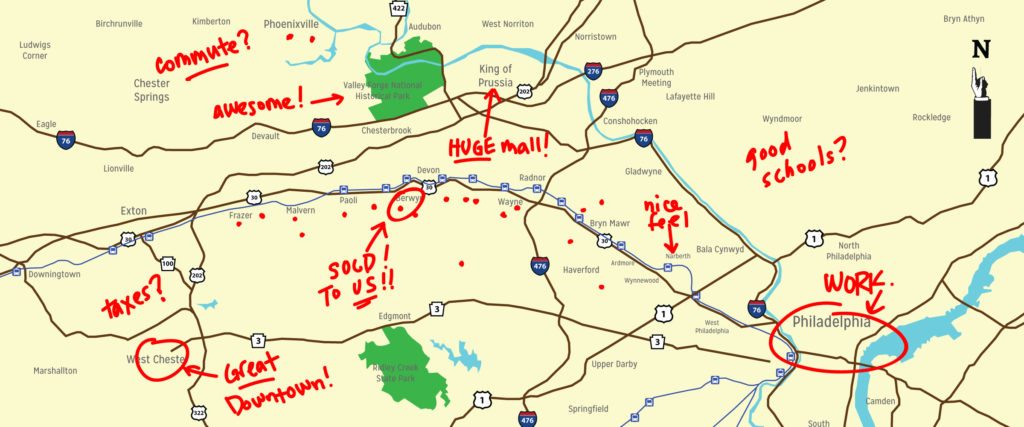
Shopping for a house when you are relocating
Moving to a new area, by definition, is hard. You’ll have to start fresh in terms of finding friends, figuring out where to shop, lining up health care providers and contractors, etc. If you have kids, you’ll most likely be dealing with a change in schools. If you are changing jobs, you are bound to encounter some stress in adjusting to your new situation. And then there’s your home. It takes a little while to make any new house feel like home. But even prior to that point, you have to find and purchase a new place to live. The best course of action is to find a good buyer agent who can explain local idiosyncracies and educate you about neighborhoods, school districts, architectural styles, commuting distances, etc. Once you’ve discussed your needs (budget, home size and other specifics), he or she will set up a search for you so you can receive listings that meet your criteria.
The secret weapon to considering properties
There is a ton of information contained within an MLS listing, though many agents don’t explain to their clients how to get the most out of reading the listing. (If you’d like to find out how, watch this video.) It will tell you the price and number of bedrooms and bathrooms, but it will also indicate whether there is a basement (and if it’s finished), if there’s air conditioning, if there’s a garage, what the square footage is, the acreage, the sales history, whether it’s on public or private utitlites, what the school district is and more. So, yeah, there are a lot of words there! If you know how to navigate all that text, though, you will learn much more about the property.
Aside from the written information, it’s the visual that is so often overlooked. There is a map showing the location of the property in every MLS listing. It not only lets you know its general location, but it allows you to see whether, for example, it’s in the shadow of a highway. Or if a creek runs through it (think FEMA flood plain). Or if it backs to a shopping center or something like that. Some people do look at that map. But you know what buyers rarely do? Look at the google street view. Depending on the platform you’re using, the map may offer a google street view button (Compass listings all do). That little yellow stick figure icon is your best friend in the process of house hunting from out of town.
How to get the most out of it
So what should you be looking for in the google street view? Note what the surrounding houses and neighborhood look like. Take a virtual stroll up and down the street and be sure to use the arrows to turn a full 360 degrees. There could be a water tower across the street. Or a run-down shack. Is the house you’re considering the nicest house on the street (not usually a wise purchase)? Is it way up on a hill or down in a trough? Are there trees? Is the street safe for walking a dog or jogging? Can you park on it?
This tool is so underused and undervalued! Being able to take a virtual look around can provide so much more of a clear idea of what that neighborhood feels like—and that is the hardest thing to get a handle on when you are unfamiliar with where you’ll be moving. Especially if you are coming in for a visit to tour properties, you don’t want to waste time seeing houses (that may be good fits) if the neighborhoods are not. It will save you not only time, but emotional energy by reducing the opportunities for disappointment.
If you are relocating to the Philadelphia/Main Line area, please go to my blog page and search for posts using the relocation tag. Contact me to discuss your Philadelphia area relocation! jen@jenniferlebow.com/610 308-5973


Leave a Reply